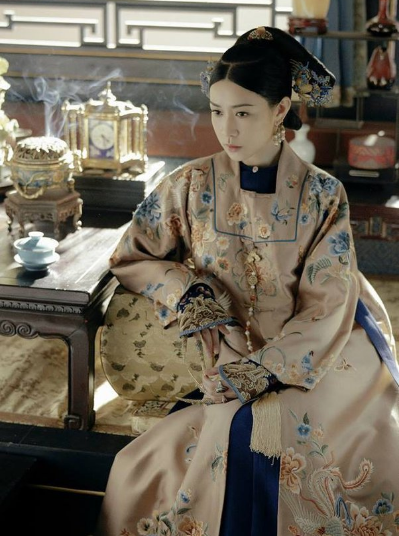In ancient China, concubines wore luxurious garments, often made from silk, with intricate designs and colors indicating their status.
Historical Overview of Concubines in China
In ancient China, concubines occupied a unique, complex position within the imperial hierarchy. They played significant roles in court politics and familial lineages, subordinate not only to the empress and royal wives. Their status hinged on the emperor’s favor and their ability to form strategic alliances.
The Role and Status of Concubines in Imperial China
Beauty and talent often determined the selection of concubines in imperial China. Their primary role involved bearing offspring, especially male heirs, for the emperor. Some concubines rose to power and influence, while most lived under strict control and surveillance. They struggled constantly for recognition and favor in a highly competitive environment, with their status swinging dramatically based on their ability to bear sons and the emperor’s changing affections.

Evolution of Concubine Attire Across Different Dynasties
Concubine attire evolved significantly across different Chinese dynasties, mirroring changes in fashion and social norms. For example, during the Tang dynasty, concubines typically wore flowing robes with wide sleeves, showcasing the era’s opulence. In contrast, the Ming dynasty favored more form-fitting and modest attire. The design and quality of their clothing not only indicated their rank within the harem but also aligned with the artistic and cultural trends of the period. Concubines favored by the emperor often wore luxurious silk fabrics and adorned themselves with elaborate hairstyles and jewelry.
Clothing Styles of Concubines in Ancient China
The clothing styles of concubines in ancient China were as diverse as the eras they spanned. These styles not only reflected their status and roles but also adhered to the aesthetic norms of their times. From the luxurious silks of the Tang dynasty to the more reserved Ming era, concubine attire always echoed the prevailing fashion trends.
Fabrics and Colors Used in Concubine Garments
Concubines often wore garments made from the finest fabrics available, including silk and brocade. These fabrics often featured intricate embroideries and patterns. The colors of their garments, ranging from bold reds to subtle pastels, were carefully chosen to reflect their rank and status. For instance, brighter colors like red and gold were popular among favored concubines, while more subdued tones were for those of lower rank.
Distinctive Features of Concubine Dress Compared to Other Women
The dresses of concubines differed markedly from those of ordinary women. They usually featured finer fabrics, more elaborate designs, and intricate detailing. The cut and fit of their garments were also distinct, often tailored to accentuate elegance and femininity. Moreover, the layering of garments and the use of accessories like hairpins and sashes further set apart the concubines’ attire, making it a symbol of their unique position within the imperial court.
Influence of Royal Decrees on Concubine Attire
Royal decrees played a pivotal role in shaping the attire of concubines in ancient China. These decrees, emanating directly from the emperor or his advisors, often dictated the style, fabric, and colors of the garments concubines wore. They served not only to maintain order within the court but also to reflect the emperor’s tastes and the political climate of the time.
Imperial Edicts and Their Impact on Clothing Styles
Imperial edicts frequently influenced the clothing styles of concubines. These edicts could mandate changes in fashion, introducing new styles or reviving old ones. For example, an emperor favoring the aesthetic of a past dynasty might decree a return to the styles of that era, leading to a resurgence of those fashions among concubines. Such edicts were a powerful tool in controlling and standardizing court attire.
https://www.youtube.com/watch?v=avCygjYgVa4&pp=ygUhV2hhdCBkaWQgY29uY3ViaW5lcyB3ZWFyIGluIENoaW5h
Restrictions and Privileges in Dress for Concubines
Concubines faced both restrictions and privileges in their dress based on royal decrees. High-ranking concubines often enjoyed the privilege of wearing finer fabrics and more elaborate designs. In contrast, lower-ranking ones faced stricter limitations in their choice of attire, both in terms of style and color. This differentiation in dress served as a visual representation of their hierarchy within the court and was strictly enforced through these decrees.
Ceremonial and Everyday Attire of Concubines
Concubines in ancient China had distinct attire for ceremonial occasions and everyday wear. These clothing choices not only adhered to the strict hierarchies and protocols of the imperial court but also reflected the cultural and artistic trends of their times.
Differences in Clothing for Formal Occasions and Daily Wear
For formal occasions, concubines wore elaborate and luxurious dresses, often made from the finest silk with intricate embroidery. These garments were rich in symbolism and color, designed to convey status and elegance. In contrast, their everyday attire was much simpler and more practical, focusing on comfort and ease of movement within the confines of the palace.
Special Attire for Ceremonies and Court Events
During ceremonies and court events, concubines’ attire took on even greater significance. They would often wear special gowns that were exclusive to such events, adorned with precious stones and detailed motifs. These garments were designed to showcase not only their beauty but also their position in the court hierarchy. The choice of colors, fabrics, and designs was meticulously controlled, often reflecting the nature of the event and the emperor’s preferences.
Accessories and Hairstyles of Concubines
Accessories and hairstyles played a crucial role in the lives of concubines in ancient China. They used these elements not only for beautification but also to signify their status and role within the imperial court. The selection of these items was a careful process, balancing tradition, fashion, and symbolism.
Jewelry and Ornaments Worn by Concubines
Concubines adorned themselves with a variety of jewelry and ornaments, each with its own significance. They favored items like hairpins, necklaces, and bracelets, often made from precious metals and stones. The intricacy and value of these pieces were directly proportional to their rank in the court. Higher-ranking concubines had access to more elaborate and expensive jewelry, symbolizing their proximity to the emperor.

Hairstyles and Their Symbolic Meanings in the Concubine Hierarchy
The hairstyles of concubines were not just a matter of fashion but also a reflection of their status. Intricate hairdos with multiple pins and accessories were common among higher-ranking concubines. Each style carried symbolic meanings, often related to the concubine’s position, marital status, and favor with the emperor. The complexity of these hairstyles also reflected the time and resources available to them, with more elaborate styles indicating a higher rank and greater favor.
Cultural and Artistic Representations of Concubine Attire
The attire of concubines in ancient China has been a significant subject in cultural and artistic representations, capturing the essence of their elegance and the complexities of their lives. These depictions offer insights into historical fashions and the societal roles of concubines.
Depiction of Concubine Clothing in Chinese Art and Literature
Chinese art and literature have extensively portrayed concubine attire, often highlighting the luxurious and intricate nature of their clothing. Paintings, poems, and novels from various dynasties depict these garments in detail, showcasing the fabrics, colors, and styles unique to different periods. These artistic depictions not only illustrate the fashion trends but also convey the emotional and social dimensions of the concubines’ lives.
Influence of Historical Concubine Attire on Modern Fashion
Historical concubine attire continues to influence modern fashion. Designers often draw inspiration from the elegance and intricacy of these garments, adapting their elements into contemporary designs. This fusion of ancient styles with modern aesthetics has led to unique fashion trends that pay homage to China’s rich sartorial history. These modern interpretations retain the essence of traditional concubine attire while incorporating innovative materials and techniques.







